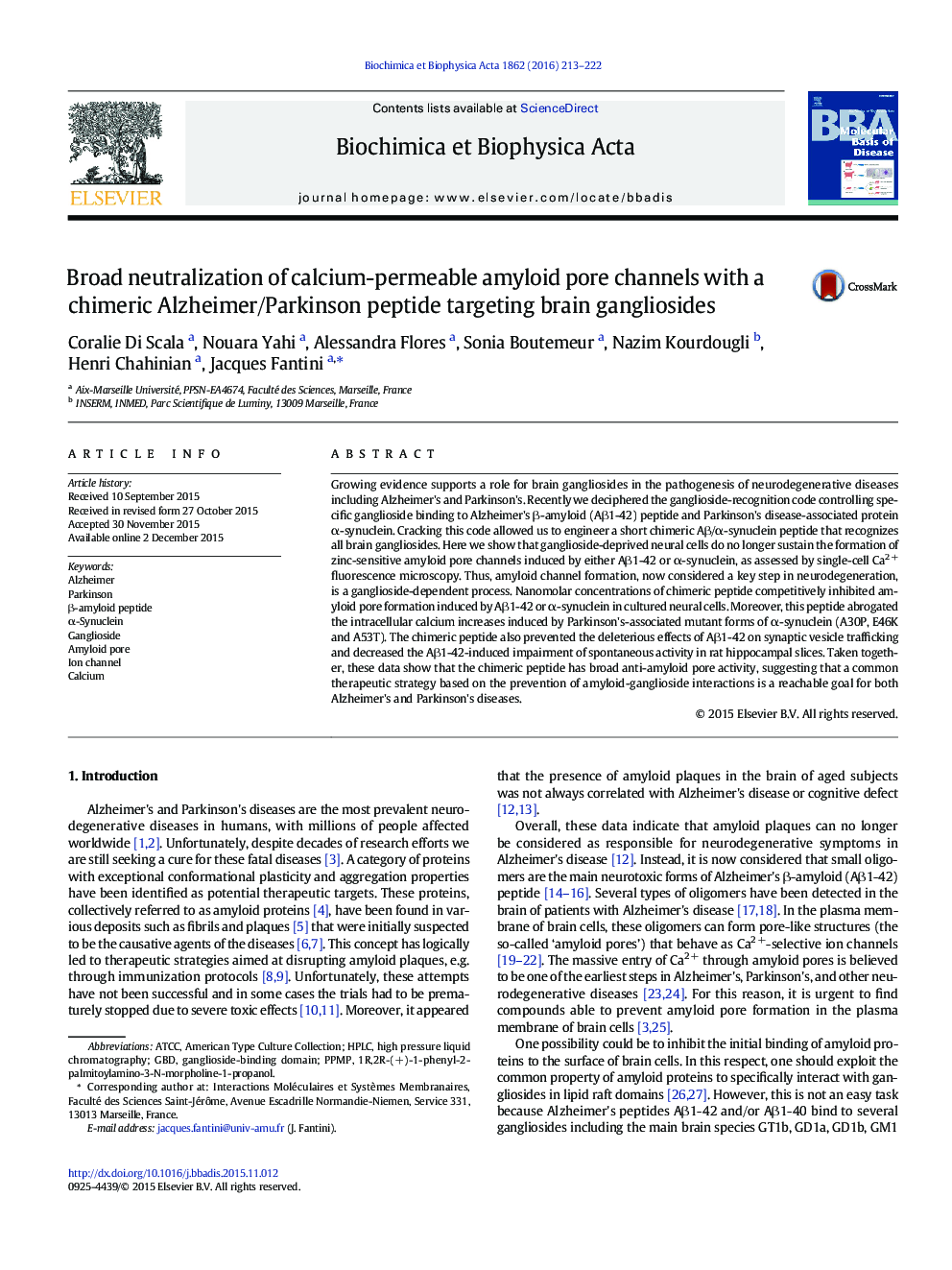| کد مقاله | کد نشریه | سال انتشار | مقاله انگلیسی | نسخه تمام متن |
|---|---|---|---|---|
| 1904485 | 1534637 | 2016 | 10 صفحه PDF | دانلود رایگان |
• Alzheimer's disease therapies that target amyloid plaques have failed.
• Alternative strategies focus on neurotoxic oligomers including amyloid pores.
• We created a chimeric peptide with universal ganglioside-binding properties.
• Neutralizing gangliosides with this peptide blocks amyloid pore formation.
• Targeting brain gangliosides is a new strategy for Alzheimer and Parkinson diseases.
Growing evidence supports a role for brain gangliosides in the pathogenesis of neurodegenerative diseases including Alzheimer's and Parkinson's. Recently we deciphered the ganglioside-recognition code controlling specific ganglioside binding to Alzheimer's β-amyloid (Aβ1-42) peptide and Parkinson's disease-associated protein α-synuclein. Cracking this code allowed us to engineer a short chimeric Aβ/α-synuclein peptide that recognizes all brain gangliosides. Here we show that ganglioside-deprived neural cells do no longer sustain the formation of zinc-sensitive amyloid pore channels induced by either Aβ1-42 or α-synuclein, as assessed by single-cell Ca2 + fluorescence microscopy. Thus, amyloid channel formation, now considered a key step in neurodegeneration, is a ganglioside-dependent process. Nanomolar concentrations of chimeric peptide competitively inhibited amyloid pore formation induced by Aβ1-42 or α-synuclein in cultured neural cells. Moreover, this peptide abrogated the intracellular calcium increases induced by Parkinson's-associated mutant forms of α-synuclein (A30P, E46K and A53T). The chimeric peptide also prevented the deleterious effects of Aβ1-42 on synaptic vesicle trafficking and decreased the Aβ1-42-induced impairment of spontaneous activity in rat hippocampal slices. Taken together, these data show that the chimeric peptide has broad anti-amyloid pore activity, suggesting that a common therapeutic strategy based on the prevention of amyloid-ganglioside interactions is a reachable goal for both Alzheimer's and Parkinson's diseases.
Figure optionsDownload high-quality image (218 K)Download as PowerPoint slide
Journal: Biochimica et Biophysica Acta (BBA) - Molecular Basis of Disease - Volume 1862, Issue 2, February 2016, Pages 213–222
